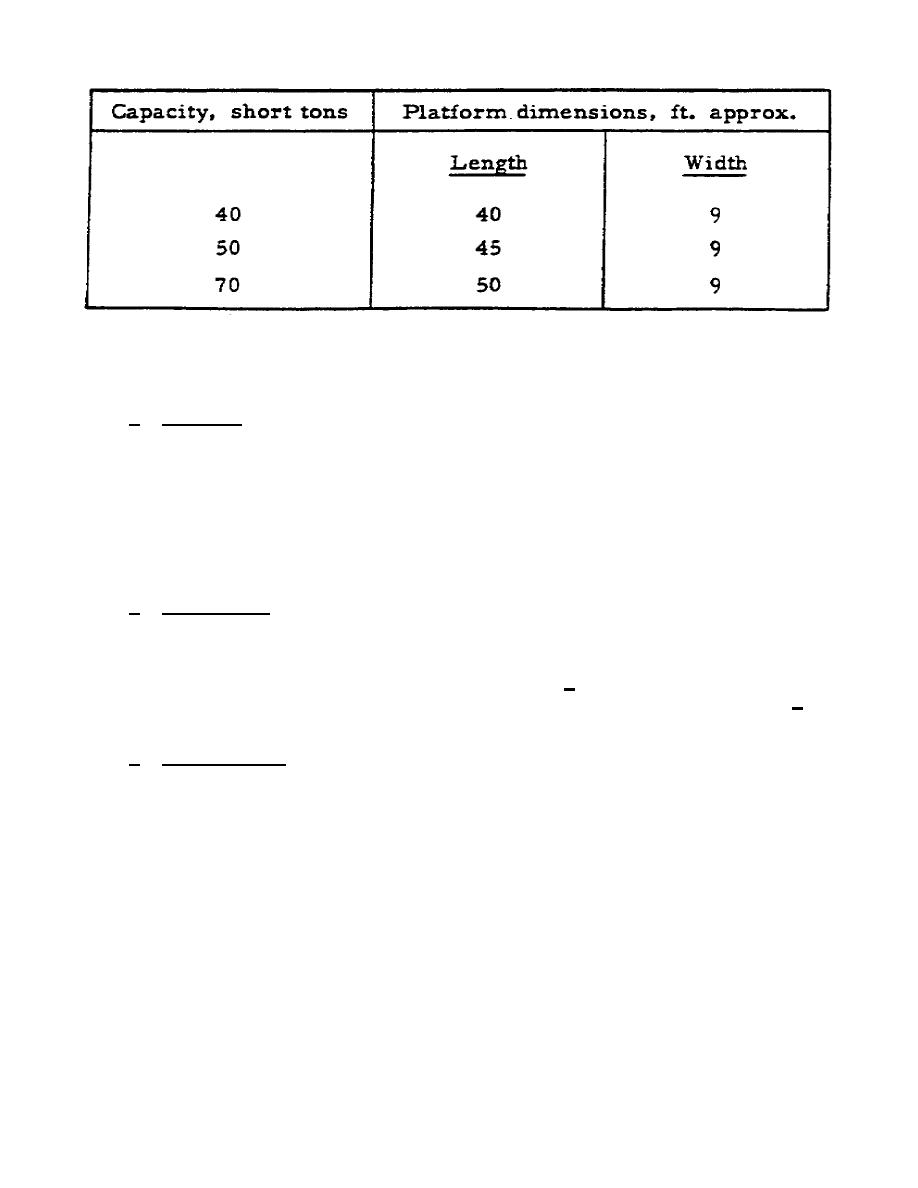
Of the information stenciled on a flatcar, three items give the
military shipper essential data about the car he is to load: capacity, load
limit, and light weight.
a. Capacity. Suppose you see a car marked CAP 100,000. What does it
mean to you? Simply that this is the capacity marking of the car that
places it in a tonnage class. Capacity in this instance is "nominal"; it is
expressed in multiples of 1,000 pounds and is based on the weight of the car
itself and the total allowable weight of car and load. CAP 100,000 means
this car is in the 50ton class. The CAP figure does not tell you how heavy
your load can be any more than the nominal rating of a 5ton truck (10,000
pounds) limits the payload to 10,000 pounds. As you may know, a socalled
5ton truck can carry more than 5 tons on a highway.
b. Load limit. The abbreviation LD LMT with a numberafter it
expresses the maximum load limit in pounds the car is designed to carry
without endangering car or load. The notation "LD LMT 118,600" on a flatcar
means the car can carry a load of up to 118,600 pounds. Load limit plus the
weight of the car, described in subparagraph 1.5c as "light weight," equals
the total allowable weight on the rails, mentioned in paragraph 1.3a as
depending upon axle strength.
c. Light weight. The abbreviation LT WT and a number (for pounds)
refers to the weight of the car itselfits "light weight"without a load,
clean, standing still on the scales, and uncoupled at each end.
1.6. HEIGHT AND WIDTH LIMITS
Equipment prepared for unrestricted rail transportation on United
States main lines with standard 56 1/2inch gage must not exceed the
following height and width limits. Notice that the higher the load the
narrower it must be; this is to allow for tunnel and other overhead
obstructions found along railway lines. Thus, a load 9 feet
8



 Previous Page
Previous Page
